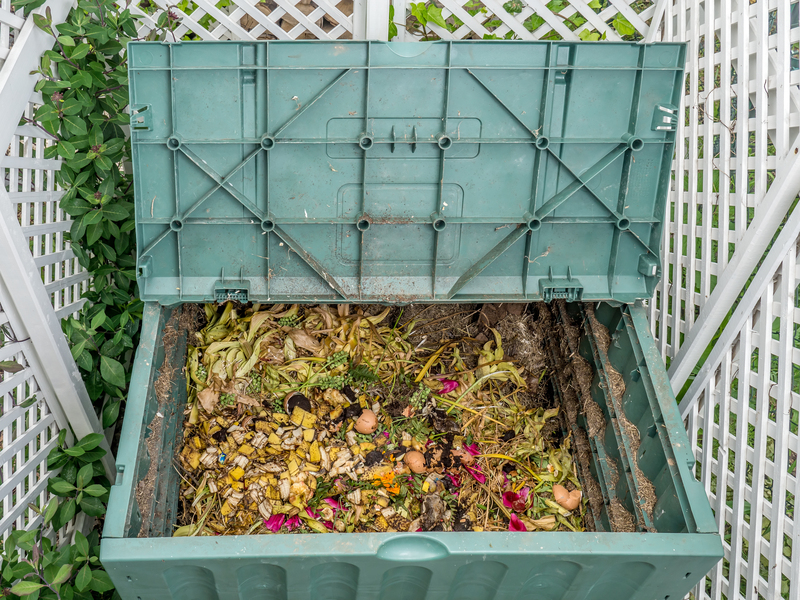Disposal Options for Damaged or Broken Cookware: A Comprehensive Guide
Are your old pots and pans taking up valuable kitchen space? Perhaps you've broken a glass baking dish, scorched a nonstick pan, or worn through your trusty skillet and now you're wondering what to do next. Disposing of damaged or broken cookware isn't always as straightforward as tossing it in the trash. Not only do some materials require special handling, but there are environmentally responsible ways to handle these household items. In this guide, we explore all your options for getting rid of worn-out cookware, with actionable tips to help you declutter sustainably and safely.

Why Proper Cookware Disposal Matters
It's easy to overlook the environmental impact of kitchen utensils and cookware. But metal pans, glass bakeware, and even nonstick utensils can cause harm if improperly disposed of. When you throw cookware directly into landfill, you contribute to increasing environmental waste and pollution. Furthermore, some cookware materials (like nonstick coatings containing PTFE or PFOA) may release harmful substances as they degrade.
- Metal pots and pans take decades, if not centuries, to decompose in a landfill.
- Glass cookware is almost impossible to break down naturally.
- Ceramic and nonstick surfaces can leach chemicals.
By making informed decisions about disposing of broken cookware, you're not just freeing up space--you're making a positive environmental impact.
Types of Damaged Cookware and How to Identify Them
Before deciding on the best disposal option for your cookware, it's important to determine its material and the extent of the damage. Here are common types you may find in your kitchen:
Metal Cookware (Stainless Steel, Aluminum, Cast Iron, Copper)
- Often recyclable if clean and free of plastic handles or coatings.
- Dents, warping, heavy rust or broken handles signal it's time for disposal.
Nonstick Cookware (Teflon, Ceramic-Coated)
- Scratched, peeling, or blistered nonstick coatings are unsafe to use.
- Some recycling centers reject these because of the special coatings.
Glass Bakeware
- Cracks, chips, or shattering make the cookware dangerous to use.
- Borosilicate and tempered glass may not be accepted in standard glass recycling.
Ceramic and Stoneware
- Chipping, cracking, or breaking may expose harmful glazes or sharp edges.
- Ceramic often cannot be recycled alongside glass or metal.
Top Disposal Options for Damaged or Broken Cookware
Now that you've identified your material, let's look at effective and eco-friendly ways to dispose of old cookware.
1. Recycle Your Old Cookware
Recycling damaged pots and pans is one of the most sustainable options. Most metal cookware (such as cast iron, stainless steel, copper, and aluminum) can be recycled, though you'll need to take a few steps:
- Remove non-metal components: Take off any plastic, silicone, rubber, or wood handles and glass lids.
- Rinse off any food residue to avoid contamination.
- Contact your local recycling center: Some centers accept cookware curbside, while others will require drop-off at a scrap metal facility.
- Check if nonstick or coated cookware is accepted. Sometimes, cookware with Teflon or ceramic coatings is rejected, while pure metal pieces are welcomed.
Important: Glass cookware and ceramics generally cannot be recycled with your regular glass due to differences in melting points and chemical properties.
2. Donate Usable but Damaged Cookware
If your cookware is only lightly damaged--perhaps slightly discolored, scratched, or gently warped--it may still be donatable. Many charitable organizations, shelters, and thrift stores accept gently used pots and pans.
- Make sure items are clean and structurally sound (no exposed rust, sharp edges, or toxic coatings).
- Contact local shelters, churches, and nonprofits to see what they need.
- If the cookware is still safe to use, donate rather than discard!
3. Upcycle or Repurpose Broken Kitchenware
Just because your pan can't handle the heat doesn't mean it's lost all value. Upcycling cookware is a creative way to keep it out of the landfill.
- Garden planters: Old pots and pans make quirky, inexpensive flower or herb containers.
- Wall decor: Hang unique pans, skillets, or lids for eye-catching kitchen decoration.
- Organizers: Use pan lids as bulletin boards, or deep pots for garage tool storage.
- Paint or decorate broken pieces for use as birdbaths, candle holders, or trays.
If you enjoy crafts, there are countless DIY projects for upcycling broken cookware.
4. Take Cookware to a Scrap Metal Facility
For metal cookware that can't be placed in curbside recycling, scrap metal recycling centers are an excellent solution.
- Locate a nearby scrap yard (search "scrap metal recycling near me" online).
- Remove all non-metal parts to ensure your cookware is accepted.
- Some facilities may pay for copper, brass, or cast iron items by weight.
- This option often supports industrial recycling, so you're giving your old pots new life.
5. Dispose in Household Waste (Last Resort)
If your cookware material truly can't be recycled, reused, or repurposed, disposal in the trash is the last option. Be sure to:
- Wrap broken glass or ceramic pieces in newspaper or thick plastic to prevent injury.
- Label waste clearly if submitting hazardous nonstick-coated pans.
- Check your municipal guidelines to see if special handling is required for specific coatings or materials.
Note: Some municipalities consider Teflon, PTFE, or PFOA materials hazardous--never burn or smash these items yourself.
How to Prepare Cookware for Disposal
Preparing your cookware for safe disposal protects both sanitation workers and the environment.
- Scrub and clean the cookware, removing leftover food, oil, and debris.
- Disassemble removable parts, particularly if your item has a blend of materials (e.g., wood, metal, plastic).
- For glass or ceramic, carefully break large pieces into small, manageable sections and wrap them to prevent injury.
- Double-check your local recycling or waste collection rules so you don't contaminate a recycling stream.
Special Considerations: Nonstick and Specialty Cookware
Nonstick pans and other specialty cookware (like copper-core, enameled cast iron, or induction-ready pots) require additional care:
- If the nonstick coating is scratched or peeling, it may contain harmful chemicals--never attempt to recycle with regular metals unless specifically accepted.
- Contact brands or manufacturers. Companies like Calphalon, Tefal, and Le Creuset sometimes offer recycling take-back programs.
- High-end cookware may be eligible for trade-in or buy-back programs if undamaged or lightly worn.
Common Questions about Cookware Disposal
Is it okay to throw metal pots and pans in the trash?
While you can put metal cookware in the trash, it's better to recycle it if possible. Scrap metal facilities will recover and reuse the metal, reducing environmental waste.
Can broken glass cookware be recycled?
Most glass cookware--especially Pyrex and borosilicate--is not accepted in regular glass recycling due to differences in temperature resistance and melting properties. Instead, wrap and dispose of in household trash or look for specialty programs.
What should I do with cast iron pans that are rusted?
If the cast iron is beyond repair or you're unable to restore it, recycle at a scrap metal facility. However, many rusted cast iron pans can be sanded, reseasoned, and reused or donated.
What about cookware with wooden handles or composite materials?
Disassemble the parts and separate the metal from other materials. Only the metal portions are usually recyclable.
Is cookware with nonstick coating hazardous waste?
Traditional Teflon (PTFE) pans aren't classified as hazardous household waste, but some municipalities treat them as such. Contact your local waste authority for guidance.

Zero Waste and Circular Economy Alternatives
If you're committed to sustainability, zero waste living offers alternatives to disposal. Consider the following:
- Buy high-quality, long-lasting cookware to reduce frequency of disposal.
- Engage in product stewardship--select brands that offer return, recycling, or buy-back programs.
- Join local "Buy Nothing" or barter groups to pass along gently used items directly to others.
- Explore repairs where possible (e.g., re-seasoning cast iron, replacing handles) before discarding.
Conclusion: Choosing the Right Disposal Method
There's no one-size-fits-all answer for the best way to dispose of damaged cookware. The right route depends on the cookware's material, condition, and what facilities are available in your area. By exploring recycling, donation, upcycling, and responsible disposal options, you can declutter your kitchen while minimizing your ecological footprint and perhaps even offering your old pans a new lease on life.
Remember: Always check with your local waste management or recycling program for the most current cookware disposal guidelines. With a bit of research and creativity, disposing of broken cookware can be safer, more sustainable, and maybe even fun!